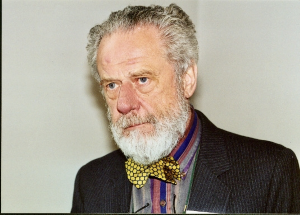It was with great sadness that we learned of the death of a pioneer and intellectual trailblazer in computational linguistics who had close ties to Saarland University and the Saarbrücken site of the German Research Center for Artificial Intelligence (DFKI). Over several decades, Prof. Martin Kay played a formative role in the development of computational linguistics, an interdisciplinary subject that is related to artificial intelligence, but also to modern linguistics. Throughout his life, he was an academic who enjoyed great recognition for his research in both computer science and linguistics.
Martin Kay studied ancient languages and linguistics at Cambridge, where he also became acquainted with early attempts in computer science to use computers for language analysis and automatic translation. Both as an undergraduate and following his graduation, he worked in the field of natural language processing at the Cambridge Language Research Unit. His next stop was the RAND Corporation, one of the major think tanks in US research. In 1972, he became a college professor and chairman of the Department of Information and Computer Science at the University of California at Irvine. He was appointed research fellow at the renowned Palo Alto Research Center (PARC) of the XEROX Corporation in 1974. From 1985, he was released from his work at PARC to teach 50% of the time as a professor of linguistics at Stanford University.
In addition to his Stanford professorship, Martin Kay also served as an honorary professor at Saarland University for twelve years (2002-2014). Each year he held one or two lectures in Saarbrücken, which were very popular with our students. During his stays, he also advised us on research and contributed through lectures and in discussion events to the integration of linguistics, computational linguistics and translation science.
Martin Kay invented the concept of chart parsing, a class of algorithms for efficient syntactic analysis. With functional unification grammar, he developed the first grammar model in the family of unification grammars, which were very popular in the 1980s and 1990s and still play a role in linguistics today. He was one of the pioneers of finite state morphology, which influenced natural language processing as well as morphology in theoretical linguistics. In his article “The Proper Place of Men and Machines in Language Translation”, which had been circulating in research for a long time before finally appearing in the journal Machine Translation in 1997, he sketched out the basic ideas for integrating automatic translation into the human translation process.
Martin Kay was a past president of the Association of Computational Linguistics (ACL) and the International Committee for Computational Linguistics (ICCL). In 2005, he was honoured with the ACL’s Lifetime Achievement Award. In 1982, he received an honorary doctorate from the University of Gothenburg and in 2008 from the University of Geneva.
Martin Kay advised research organisations and projects in several countries. He was an expert advisor to the Federal Ministry of Education and Research (BMBF) and a consultant on the two largest European projects in automatic translation EUROTRA and VERBMOBIL, as well as a valued advisor to our DFKI projects.
His quiet and unassuming manner was only in apparent contrast to his acknowledged capacity as an intellectual leader. His immense expertise across multiple disciplines and wide-ranging intellectual interests made him a wonderful conversationalist for those colleagues and friends who were fortunate enough to spend time with him. To all students and colleagues, however, he is remembered as a gifted speaker who could captivate and convince his audiences with excellent didactic skills, rhetorical acuity and a humour all his own.
We have missed Martin Kay for several years now, since he retired to devote his time fully to his sick wife, who sadly passed away at the end of last year. Following his death on 8 August 2021, this painful bereavement is now accompanied by a poignant sense of irreversible loss.
Prof. Dr. Hans Uszkoreit
10/20/2021
Obituary Prof. Dr. Martin Kay

